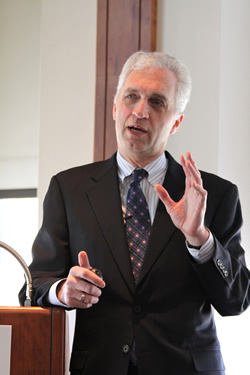Why Substance Abuse Peaks Between Ages 18 and 25
In response to stresses, young people often self-medicate with drugs and alcohol

A phenomenon known as the "optimistic bias" helps explain why substance abuse peaks between ages 18 and 25, psychologist Jeffrey Jensen Arnett said Thursday in a talk at Duke sponsored by the Center for Child and Family Policy.
"Emerging adults know bad things can happen when they engage in substance abuse. But they believe bad things will happen to other people," said Arnett, a research professor at Clark University in Worcester, Mass.
Arnett, who coined the term "emerging adulthood" to describe the phase of life between ages 18 and 25, said drug and alcohol abuse has declined among emerging adults in the last 20 years. Still, substance abuse rates remain dramatically higher in that age group than in others.
Typically, young adults face big transitions in key arenas such as love and work, Arnett noted. In response to those stresses, they often self-medicate with drugs and alcohol. That's important for health practitioners to remember, he said.
"They're doing it for a reason," Arnett said. "You can't just take it away. You have to ask yourself, 'What will they replace it with?'"
Arnett's talk took place at the Sanford School of Public Policy and was part of the TPRC Science to Service: Substance Abuse Prevention Seminar series.